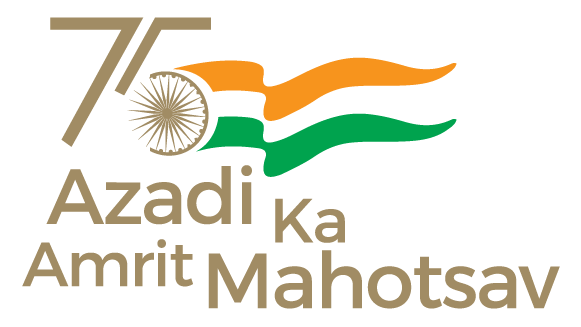
Employment is the primary concern of the Government of India and various steps are being taken by Ministries/Departments for generation of employment opportunities in the country.
The Labour Force Participation Rate (LFPR) is the percentage of population which is either working (employed) or seeking for work (unemployed). It is important to note that the complete working age population may not be working or seeking work. A substantial portion of working age population is either pursuing education (secondary/ higher/ technical education) or engaged in unpaid activities like production of goods for own consumption, unpaid domestic activities or caregiving services for household members, volunteering, training, etc. Thus, making an inference by some section of media that half of the working age population has lost hope for work is factually incorrect.
As per the reports of Ministry of Education for year 2019-20, more than 10 crore person were enrolled in Secondary, Higher Secondary, Higher or Technical education during 2019-20 out of which, about 49% were female. Majority of these students pursuing higher education are in the working age population but, all of them may not be seeking work. Similarly, not all female engaged in unpaid domestic services for household members may be seeking paid work.
The authentic data source of employment/unemployment indicators in India are released by the Ministry of Statistics and Programme Implementation (MoSPI) through Periodic Labour Force Survey (PLFS) which is conducted since 2017-18. The latest annual PLFS report is available for survey period 2019-20. As per annual PLFS report, the Labour Force participation Rate (LFPR), Worker Population Ratio (WPR) and Unemployment Rate (UR) in usual status for persons of age 15 years and above were as follows:
(in percentage)
|
Year |
WPR |
LFPR |
UR |
||||||
|
Male |
Female |
Total |
Male |
Female |
Total |
Male |
Female |
Total |
|
|
2017-18 |
71.2 |
22.0 |
46.8 |
75.8 |
23.3 |
49.8 |
6.1 |
5.6 |
6.0 |
|
2018-19 |
71.0 |
23.3 |
47.3 |
75.5 |
24.5 |
50.2 |
6.0 |
5.1 |
5.8 |
|
2019-20 |
73.0 |
28.7 |
50.9 |
76.8 |
30.0 |
53.5 |
5.0 |
4.2 |
4.8 |
- The PLFS data indicates that the Labour Force and Work Force in the country has increased steadily during 2017-18 to 2019-20 and on the other hand Unemployment Rate has declined.
- It is further evident from the above data that the increase in female labour force as well as female worker population ratio during year 2017-18 to 2019-20 is higher compared to increase in male labour force & worker population ratio.
The Economic Survey 2021-22 has estimated total number of persons in Labour Force, Employment and Unemployment for all ages and in usual status for the year 2017-18, 2018-19 and 2019-20 on the basis of PLFS report, which are as follows:
(in crore)
|
Year |
Labour Force |
Employment |
Unemployment |
|
2017-18 |
50.95 |
47.14 |
3.83 |
|
2018-19 |
51.82 |
48.78 |
3.04 |
|
2019-20 |
56.34 |
53.53 |
2.81 |
- The Economic Survey 2021-22 estimates indicate there was an increase of 4.75 crore in employment during 2019-20 compared to 2018-19.
- The increase in labour force during 2019-20 compared to previous year was 4.52 crore.
- Thus, during 2019-20, more employment was generated than the increase in labour force in the country.
The quarterly PLFS reports for urban sector are available till September, 2021. The quarterly labour force data indicates that though Labour Force declined during the 1st wave of Covid-19 pandemic, however, with the revival of economy in the subsequent quarters of 2020-21, the labour force showed a swift recovery.
Quarterly Employment Survey (QES), conducted by Labour Bureau, aims to assess employment situation in respect of selected nine sectors of non-farm economy of India over successive quarters. The estimated total employment in the nine selected sectors from the first round of QES (April to June 2021) is approximately 3.08 crores against a total of 2.37 crores in these sectors taken collectively, as reported in the sixth Economic Census (2013-14), reflecting a growth rate of 29%.
The estimated total employment in the nine selected sectors in the second round of QES (July-September, 2021) came out as 3.10 crore approximately, which is 2 lakhs higher than the estimated employment (3.08 crore) from the first round of QES (April-June, 2021).
Employees’ Provident Fund Organisation (EPFO) Payroll Data covers the low paid workers in medium and large establishments of formal sector. The net addition in EPFO subscriptions is an indicator of the extent of job creation/ formalisation of the job market, and the coverage of social security benefits to the organized/ semi-organized sector workforce. Latest payroll data released by EPFO on 20.04.2022 shows that there is net addition in EPF subscribers of 14.12 lakh in the month of February 2022. Further, the latest net payroll data reflects that the net addition in EPF subscribers has increased by 44% during 2021-22 (up to Feb, 2022) compared to year 2020-21.
The other indicators of the economic activities such as all-time high gross GST collection in the month of March, 2022 and all-time high India’s overall export during financial year 2021-22 are also supportive of positive trend in employment generation in the country.
*****
BY/IG


